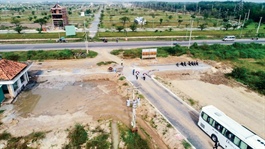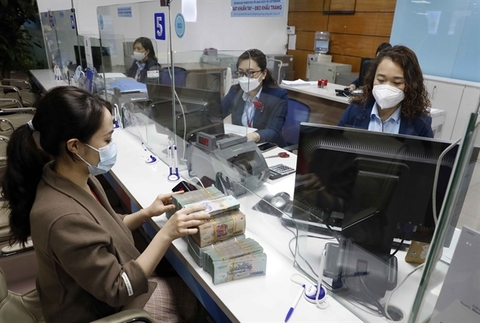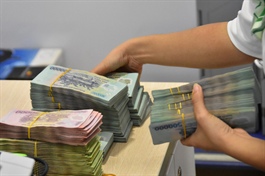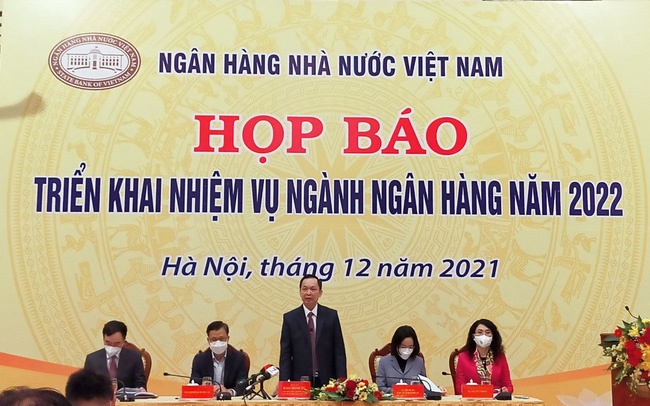Banks enable smooth remittances
Banks enable smooth remittances
Local banks are tapping into significant huge overseas cash as Vietnam continues to maintain its growth momentum among the world’s largest remittance beneficiaries.

Remittances to Vietnam are expected to reach $18.1 billion for the whole of 2021, according to the World Bank and the Global Knowledge Partnership on Migration and Development (KNOMAD).
The country, as a result, could be the world’s eighth-largest remittance beneficiaries and the Asia-Pacific region’s third-largest this year.
Last year, Vietnamese living abroad sent a total of $17.2 billion home, making the country among the top 10 biggest remittance receivers.
According to the latest World Bank Migration and Development Brief projections, remittances to low- and middle-income countries are expected to expand by 7.3 per cent to $589 billion this year.
This recovery is stronger than previously estimated, and it follows the robustness of flows in 2020, when remittances fell by just 1.7 per cent despite a severe global recession.
In a broader context, remittances now stand more than three-fold above official development assistance and, excluding China, more than 50 per cent higher than foreign direct investment, KNOMAD stated.
Likewise, Allied Market Research estimates the global remittances segment could reach over $930 billion in 2026 with a compound annual growth rate of 3.9 per cent.
KNOMAD also believes remittances are likely to expand more in 2022, although there are certain dangers. The pandemic still represents the greatest significant downside risk to global GDP, employment, and remittance flows to low- and middle-income countries.
Fiscal stimulus measures in key migratory destinations cannot be sustained permanently. Furthermore, the shift from cash to digital remittance channels witnessed since 2020 is likely to have peaked. Further expansion will necessitate better success in migrant communities’ access to bank accounts, it added.
“Policymakers should continue their efforts to keep remittances flowing by lowering the cost of remittances, increasing access to banking for migrants and for remittance service providers, and making policy responses to the pandemic crisis in terms of access to vaccines, healthcare, housing, and education inclusive of migrants,” said the organisation.
In Vietnam, one of the current remittance methods to Vietnam is via quick money transfer businesses, which charge relatively high fees ranging from 4-6 per cent of the entire amount.
Many banks are now utilising technology-enabled systems to aid users in receiving money straight into payment accounts opened at banks with low costs, thus contributing to the increase of remittances to Vietnam.
Eximbank is rolling out swift, 24/7 online remittance services thanks to its partnership with Singapore-based firm Tranglo.
And southern-based lender Sacombank, a remittance-focused financial institution, is constantly innovating and deploying digital solutions for its remittances services.
Nguyen Quoc Hung, director of Agribank Payment and Remittance Service Centre, stated that remittances through Agribank’s services have increased significantly, reaching around $1.1 billion by the end of November and outstripping the total number of remittances through this bank in 2020. Agribank is estimated to welcome around $1.2 billion for the whole of 2021, equivalent to a 15 per cent increase on-year.
“This is partly due to Agribank’s expansion into Japan, one of Vietnam’s most important markets. In terms of the Vietnamese labour force working abroad, Japan outweighs the United States,” he said.
According to the State Bank of Vietnam’s Branch in Ho Chi Minh City, the number of remittances there in the first 11 months of 2021 is roughly $6.2 billion, exceeding the figure of $6.1 billion for all of 2020. Ho Chi Minh City is among the biggest remittance receivers in Vietnam, accounting for around 30 per cent of the total amount. Overseas money to the city is prognosticated to reach $6.5-6.6 billion in 2021 as a whole, according to the State Bank of Vietnam.
Dao Minh Tuan, deputy CEO of Vietcombank Remittances Company, stated that the most popular remittances inflow comes from the North American region, followed by Asia, Australia, and then Europe.
“Especially in the US market, where many Vietnamese individuals live and work, accounting for half of total remittances to Vietnam, considerably contributing to the country being in the top 10 beneficiaries. In addition, we also notice a great number of remittances from Asian markets such as South Korea, Japan, and Taiwan,” he said. “On the flip side, the legal framework for remittances in Europe and Australia has not improved significantly, hence the amount of money from this region to Vietnam has not increased accordingly in recent years. In 2021, Vietnam is predicted to continue its growth momentum as one of 10 biggest remittances recipients, in our assessment.”
The proliferation of fintech remittance companies, according to Tuan, has facilitated more convenience for customers through online money transfer, connecting with advanced technology systems and bringing significant satisfaction to depositors, particularly in Asian countries.
“However, unauthorised avenues for sending remittances continue to exist, posing several hazards,” he cautioned. “Choosing money transfer services from commercial banks, reputable remittance companies, and state-licensed remittance companies is a safe bet for customers.”



















